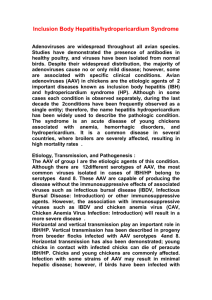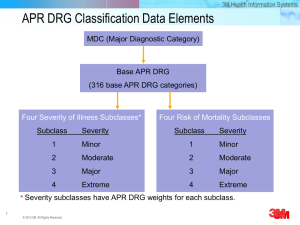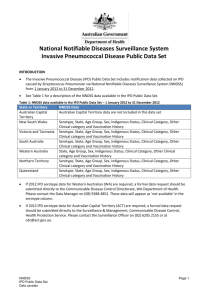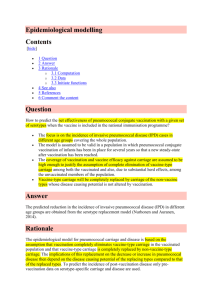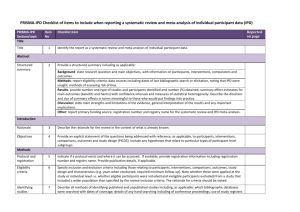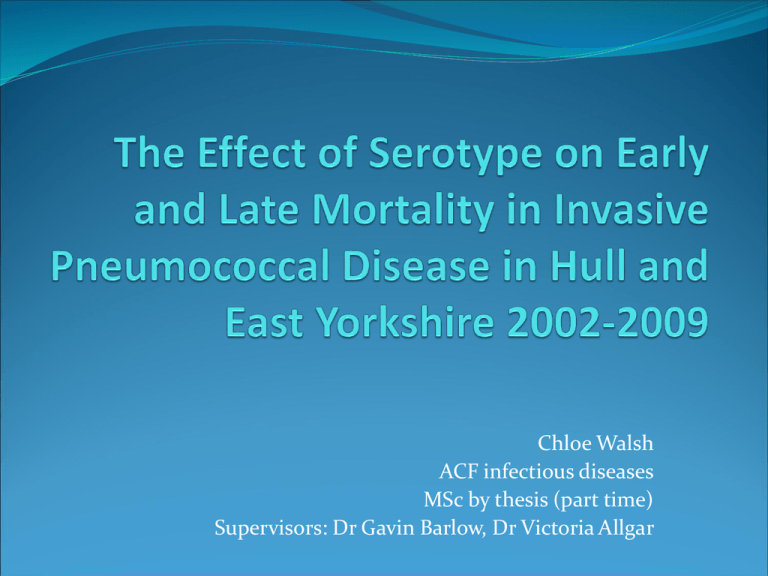
Chloe Walsh
ACF infectious diseases
MSc by thesis (part time)
Supervisors: Dr Gavin Barlow, Dr Victoria Allgar
What is Invasive Pneumococcal
Disease?
Pneumococcus is a gram positive bacterium that
colonises the upper respiratory tract.
Can become pathogenic
Invasive Pneumococcal disease
(IPD) is diagnosed when
Pneumococcus is isolated from
a normally sterile site.
Why is IPD important?
Around 2 million deaths are attributed to
Pneumococcus globally per annum
Local study of IPD (Elston et al) found that 21.6%
of patients died within 30 days of diagnosis
36.8% of patients died within one year of
diagnosis.
Overall incidence of IPD of 11.8/100000 in 2002,
increasing to 16.4/100000 by 2009
IPD and Mortality
Traditionally considered an acute illness
Both pneumonia and sepsis have been associated with
longer term mortality
Determinants of this poorer long term outcome are
not fully understood
Serotypes
Over 90 serotypes based on polysaccharide capsule
“Invasive” versus “colonising”
“Colonising” serotypes associated with poorer
outcomes
Capsule is target for vaccination
Role of serotype
Meta-analysis has shown 1, 7F and 8 to be
associated with better outcomes (“low severity”)
3, 6A, 6B, 9N and 19F are (“high severity”)
Although relationship to acute deaths has been
studied, whether serotypes influence longer term
mortality has not been established
Methods
Retrospective cohort
All patients admitted to Hull Royal Infirmary or Castle Hill
with IPD between 2002 and 2009 identified
Serotype recorded where available and classified as “low
severity”, “high severity” or “other”
Demographic data also collected (sex, age at time of sample
and index of multiple deprivation (IMD) score)
Results
N=553
Mean age 59.4
46% female
Mean IMD 31.9 (range 1.6-81.5)
Overall mortality at 30 days, 1 year and 2 years
respectively 22.9%, 36.9% and 42.4% respectively
Results
Mortality in patients with lower risk serotypes (1,
7F and 8) (n=123) was lower than with higher risk
serotypes (3, 6a, 6B, 9N and 19F) (n=75); 11.4%
versus 21.3% at 30 days (p =0.012).
At 1 and 2 years p<0.001
Increasing age (p<0.001) and male sex (p=0.003)
also associated with increased mortality at 2 years.
Mortality rate at 30 days, 1 year and 2
years by Serotype Group
Cumulative survival by Serotype Group
Conclusions
IPD is associated with increased mortality up to 2
years following infection
Infection with a “high severity” serotype is
associated with worse outcome
No evidence that infection with “low severity”
serotype is associated with increased long term
mortality
Discussion
Possible that patients who have infections caused
by “high severity” serotypes have a lower barrier to
infection due to underlying co-morbid illness
Ongoing work to further establish factors
associated with poor long term outcomes
Important to understand the role of serotype for
future vaccine development
Thank you,
Questions?

